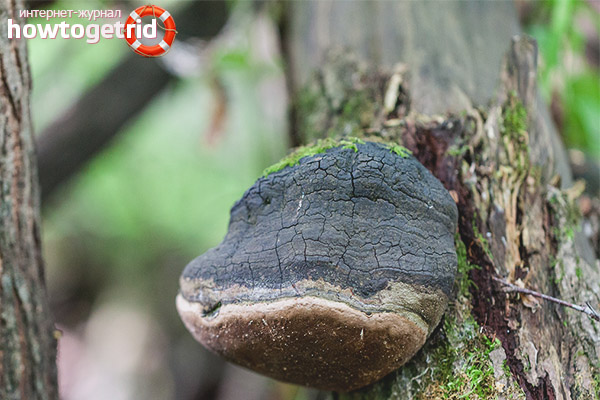The content of the article
Even those who are poorly versed in mushrooms know that certain mushrooms can be eaten, and some of them are inedible. There are even such representatives of the mushroom kingdom that bring only harm. When they grow on a tree, it rots. Such species include a false tinder fungus whose life span can reach up to 80 years. This mushroom is very widespread and can often be seen in the forests of our country.
general characteristics
This mushroom is a long-liver and is found in those places where there are many trees. For them, this is a real mortal enemy. With its growth, it causes the formation of white rot. If a tree is infected with such a fungus, then it will die pretty quickly. This happens because a false tinder appeared on the tree, which age, by the way, is not difficult to determine. Each year, a new layer appears below the fungus. It is almost impossible to separate them, but they are easy to count.
Unlike a real tinder fungus, the surface of the false species is dotted with cracks. They are quite deep. This species belongs to polypore fungi. Most of them are inedible. Such a representative belongs to the genus fellinus, which has several species, for example, a pine sponge, which includes false pine fungi.
False tinder men have a ton of other names. They are also called burnt, and are popularly called wood mushrooms. If you literally translate the name from Latin, you get a "traffic jam". The variety of false polypods fits into one genus fellinus. This name was not given to these mushrooms by chance. Indeed, in adulthood, it somewhat resembles a cork, the location of which is the bark of a tree.
Description
The surface of the fungus is covered with a black crust. The mushroom is attached to the tree sideways. The body is round with blunt ends. The form has the appearance of a hemisphere or hoof. The diameter of the mushroom can reach up to 25 millimeters, and in height with its growth it is 12 cm.
It is very difficult to distinguish different types of mushrooms by external signs, but you can do this by the type of tree on which it grows. Some of them prefer poplar, others - pine, other types of trees. False tinder fungus belongs to perennial mushrooms, but it cannot be attributed to tubular species, since the location of the tubules is the inside of the fetus. One new layer is formed annually. It is represented by a hard hoof-like outgrowth. It is characterized by significant color variability with various shades. The color may be chestnut or even cherry shades.
The mushroom is very hard, so it is not eaten. Its rigidity cannot be eliminated even if it is boiled for a long time. But one should not assume that this representative is useless to people. It is quite widely used for medical purposes.
The characteristic of healing properties
If in the old days this mushroom in crushed form was used only as smoking mixtures, now it is used for medicinal purposes. Chinese traditional medicine uses this mushroom for the prevention and treatment of cardiac pathology, conditions due to liver pathology, and cancer prevention. But it should be said that for the fight against cancer, you can use only the mushroom, the growth place of which is Taiwan. In addition, the fungus can be used as a means to prevent blood clots.
Natural prevalence
It is quite widespread in European countries and on the territory of our country. The place of its growth is deciduous and coniferous forests. Most often it can be seen on a birch trunk. It can appear not only on a sick, decaying tree. It is likely that he will appear on healthy trees. In addition, he prefers to grow on stumps, in deadwood. More often it is characterized by a single growth, but often you can meet couples. Fruit formation occurs during the warmest season. This begins in May, and the process ends in December.
Video: false tinder (Phellinus robustus)










Submit